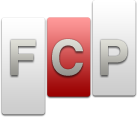Currency Exchange Rates
Foreign Exchange Rates
Two Things You Absolutely Must Know About Foreign Exchange Rates
In order to successfully trade the forex markets, you must develop a solid understanding of foreign exchange rates. Unfortunately, far too many beginning traders start trading FX without spending the time to gain knowledge about foreign exchange rates.
In the simplest terms, the exchange rate measures the value of one currency compared to the value of another currency. Let’s say, at a given time, the British pound, GBP, is worth exactly one and a half American dollars, USD.
That exchange rates dictates that you can take one hundred and fifty dollars to Britain and buy one hundred British pounds with it. Simple, right?
Yes. But just understanding the basics is not enough to trade forex with confidence. Here are two not-as-basic things that every FX trader absolutely must know about foreign exchange rates:
1. Foreign Exchange Rates Are Presented According to Certain Conventions
One of the most important parts of trading forex is understanding how the information is presented in the arena of FX trading.
In the forex markets, foreign exchange rates are presented as pairs, and there is a set way that the markets present these foreign exchange rates for sale or purchase. For the example above, with dollars and pounds, the actual, tradeable currency pair is presented as GBP/USD. You can’t trade USD/GBP, you can only trade GBP/USD.
Since they stand against each other, if one currency goes up in value, the other one necessarily goes down in value in relation to the other. If one currency goes down in value, the other one necessarily goes up in relation to the other.
In other words, you are trading the exchange rate, rather than trading one currency.
When you’re developing a trading thesis—for example, you think the USD is going to take a dive—you need to know how you can play that thesis to make money. If you can’t quickly and accurately read the various currency pairs, you can’t trade effectively.
Get familiar with the conventions of the FX markets before you start trading.
2. Foreign Exchange Rates Mean Learning Another Language
Each currency has a three letter symbol that represents it. In true trader fashion, many currencies also have affectionate nicknames.
This “inside baseball” feeling of the markets often puts new forex traders in the position of hearing an experienced trader talk (fast) about Swissy, Loonie, and Greenback and the new trader has no idea what’s going on, it’s all a bunch of gibberish.
Some of the most prominent currency symbols and nicknames are:
GBP – BRITISH POUND STERLING
USD – AMERICAN DOLLAR GREENBACK
EUR – EURO EURO
JPY – JAPANESE YEN YEN
CHF – SWISS FRANC SWISSY
CAD – CANADIAN DOLLAR LOONIE
AUD – AUSTRALIAN DOLLAR AUSSIE
NZD – NEW ZEALAND DOLLAR KIWI
In trader parlance, a currency pair is sometimes referred to by the nickname of its “base currency.” The base currency is the numerator currency, whereas the denominator currency is called the “counter currency.”
So using the GBP/USD example, GBP is the base currency, USD is the counter, and the nickname for this pair is “Sterling.”
But then there are other times where the currency pair nickname comes from the counter currency. For example, USD/CAD is often called “Loonie.”
Whenever you have people making billions of dollars in a marketplace, you have people putting up “barriers to entry” for new people to enter that marketplace. A major barrier to forex trading success is linguistic. New traders are thus challenged to learn new words or else get out of the game.
The rewards of learning this language can be tremendous. Furthermore, only a few currency pairs are really important. Currently, around 85 percent of all forex transactions involve the USD, so if you know what traders are talking about when they talk about Euro, Sterling, Loonie, Aussie, and Kiwi, you know 85 percent of what traders talk about.
Certainly getting familiar with the symbols and nicknames that involve the U.S. dollar is a good starting point for learning the language of FX trading.
Respect the Markets
So many new forex traders enter the foreign currency exchange game without sufficient respect for these incredibly powerful markets. Lack of respect for the markets causes new traders to be susceptible to getting taken advantage of by unscrupulous forex pros.
Instead, take the time to learn about the history and the language of the forex markets and put yourself in a position to not only succeed, but deserve success.
Important Forex Information
The most important step in currency trading is finding the right broker; our forex experts can help. See our
reviews of forex brokers for more information. 
Foreign currency exchange trading is the practice of trading x for y in hopes that the value of y will increase. Learn the basics of foreign currency exchange rates. 
There are many excellent foreign exchange calculators available for free on the Internet. Let us tell you how to choose a currency exchange calculator. 
Unfortunately, far too many beginning traders start trading FX without spending the time to gain necessary knowledge. Find out what you must know about exchange rates. 

